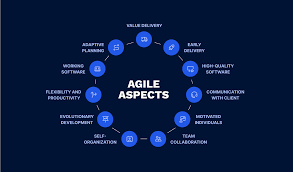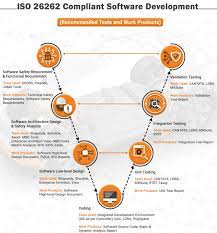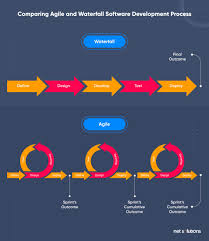Mastering the Software Development Life Cycle (SDLC) for Efficient Software Development
The Importance of Software Development Life Cycle (SDLC)
Software Development Life Cycle (SDLC) is a systematic process used by software developers to design, develop, and test high-quality software products. It is a crucial framework that ensures the efficient and timely delivery of software solutions while meeting customer requirements.
Phases of SDLC:
Planning: In this phase, project requirements are gathered, analyzed, and documented. Budget, timeline, and resources are also determined during the planning stage.
Analysis: During this phase, the system requirements are studied in detail. Developers work closely with stakeholders to understand their needs and expectations.
Design: The design phase involves creating a blueprint for the software solution based on the requirements gathered in the previous phases. This includes architectural design, database design, and user interface design.
Implementation: In this phase, actual coding takes place based on the design specifications. Developers write code according to the programming language selected for the project.
Testing: Testing is a critical phase where software is tested for bugs, errors, and functionality issues. Various testing methods like unit testing, integration testing, and system testing are performed to ensure quality.
Deployment: Once testing is complete and the software meets all requirements, it is deployed to production environments for actual use by end-users.
Maintenance: The maintenance phase involves regular updates, bug fixes, and enhancements to ensure that the software continues to meet changing user needs over time.
The Benefits of SDLC:
- Better Quality: SDLC ensures that software products are thoroughly tested before deployment, resulting in higher quality solutions.
- Cost-Effective Development: By following a structured approach like SDLC, developers can identify issues early in the process, reducing development costs in the long run.
- Easier Maintenance:S DLC’s iterative nature allows for easier maintenance and updates as changes can be implemented systematically without disrupting existing functionalities.
- Customer Satisfaction:
9 Essential Tips for Mastering the Software Development Life Cycle (SDLC)
- Understand the requirements thoroughly before starting the development process.
- Involve stakeholders at every stage of the Software Development Life Cycle (SDLC).
- Use version control systems to track changes and manage code efficiently.
- Perform regular testing to ensure quality and identify bugs early in the process.
- Document each phase of the SDLC to maintain clarity and facilitate future maintenance.
- Adopt Agile or DevOps methodologies for a more iterative and collaborative approach.
- Consider security measures throughout the SDLC to protect against potential threats.
- Plan for scalability to accommodate future growth and changes in user demands.
- Continuously gather feedback from users to improve software usability and functionality.
Understand the requirements thoroughly before starting the development process.
It is essential to thoroughly understand the requirements before initiating the development process in Software Development Life Cycle (SDLC). Clear and comprehensive comprehension of project requirements ensures that developers have a solid foundation to work from, reducing the likelihood of misunderstandings or rework later on. By taking the time to delve deep into the requirements at the beginning, teams can align their efforts with the client’s needs and expectations, leading to a more efficient and successful development cycle.
Involve stakeholders at every stage of the Software Development Life Cycle (SDLC).
It is essential to involve stakeholders at every stage of the Software Development Life Cycle (SDLC) to ensure the successful development and delivery of software solutions that meet their needs and expectations. By engaging stakeholders throughout the process, developers can gather valuable feedback, clarify requirements, and address any concerns or changes early on. This collaborative approach fosters a sense of ownership among stakeholders and helps build consensus, ultimately leading to the development of high-quality software products that align closely with the organization’s goals and objectives.
Use version control systems to track changes and manage code efficiently.
When implementing Software Development Life Cycle (SDLC) processes, it is essential to utilize version control systems to track changes and manage code efficiently. Version control systems, such as Git or SVN, allow developers to keep track of modifications made to the codebase over time. By using version control, teams can collaborate seamlessly, revert to previous versions if needed, and maintain a clear history of code changes. This practice not only enhances code management but also improves overall project efficiency and ensures better software quality throughout the SDLC stages.
Perform regular testing to ensure quality and identify bugs early in the process.
Performing regular testing throughout the Software Development Life Cycle (SDLC) is crucial to ensure the quality of the software and identify bugs early in the process. By conducting thorough and systematic testing at each stage of development, developers can detect and address issues promptly, leading to a more robust and reliable final product. Early bug identification not only helps in maintaining high-quality standards but also reduces the time and cost associated with fixing defects later in the development cycle. Prioritizing regular testing in SDLC contributes significantly to delivering a successful software solution that meets user expectations and performs optimally.
Document each phase of the SDLC to maintain clarity and facilitate future maintenance.
Documenting each phase of the Software Development Life Cycle (SDLC) is a crucial tip to maintain clarity and facilitate future maintenance of software projects. By documenting each phase, including planning, analysis, design, implementation, testing, deployment, and maintenance, developers and stakeholders can have a clear understanding of the project’s progress and requirements. Detailed documentation serves as a reference point for future updates, enhancements, and troubleshooting efforts, ensuring that the software remains well-documented and easily maintainable throughout its lifecycle.
Adopt Agile or DevOps methodologies for a more iterative and collaborative approach.
Adopting Agile or DevOps methodologies in the Software Development Life Cycle (SDLC) can significantly enhance the development process. By embracing these frameworks, teams can work in a more iterative and collaborative manner, allowing for quicker feedback loops, improved adaptability to changes, and increased efficiency in delivering software solutions. Agile methodologies promote flexibility and customer-centric development, while DevOps focuses on streamlining collaboration between development and operations teams for seamless integration and deployment. Implementing Agile or DevOps practices in SDLC can lead to enhanced productivity, better quality software, and ultimately, higher customer satisfaction.
Consider security measures throughout the SDLC to protect against potential threats.
It is essential to consider security measures throughout the Software Development Life Cycle (SDLC) to safeguard against potential threats. By integrating security practices from the early stages of planning and design to the final deployment and maintenance phases, developers can proactively identify vulnerabilities and mitigate risks. Implementing robust security protocols ensures that software products are resilient against cyber threats, protecting sensitive data and maintaining the trust of users. Prioritizing security throughout the SDLC not only enhances the overall quality of the software but also contributes to a more secure and reliable end product.
Plan for scalability to accommodate future growth and changes in user demands.
When implementing Software Development Life Cycle (SDLC) for a project, it is essential to plan for scalability to accommodate future growth and changes in user demands. By anticipating the need for scalability, developers can design a flexible and adaptable software solution that can easily expand to meet increasing user requirements or changes in the business environment. This proactive approach ensures that the software remains relevant and efficient in the long term, saving time and resources on extensive rework or redevelopment efforts down the line.
Continuously gather feedback from users to improve software usability and functionality.
Continuously gathering feedback from users is a crucial tip in the Software Development Life Cycle (SDLC) process. By actively seeking input from end-users, developers can gain valuable insights into how the software is being used and identify areas for improvement in terms of usability and functionality. This feedback loop allows for iterative enhancements that align the software more closely with user needs and preferences, ultimately leading to a more user-friendly and effective product. Embracing user feedback as an integral part of the SDLC helps ensure that the software evolves to meet changing user requirements and remains relevant in a dynamic technological landscape.











